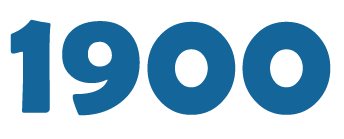Tiredness, it is often claimed, has become the modern conditions. As the richer, busier countries have grown, so sleeplessness and anxiety have also grown in the popular psyche. Research in t
You are going to read a newspaper article about sleep. Five paragraphs have been removed from the article. Choose from the paragraphs A – F the one which fits each gap (1 – 5). There is one extra paragraph which you do not need to use.
Enough Sleep?
Tiredness, it is often claimed, has become the modern conditions. As the richer, busier countries have grown, so sleeplessness and anxiety have also grown in the popular psyche. Research in the USA has found 40 million Americans to be chronically affected, and some recent best-selling novels in Britain have featured insomniacs as protagonists, or sleep-research laboratories as their settings.
However, there is a strong degree of certainty among scientists that women sleep for half an hour longer than men, and that older people require less sleep, though they don’t know why. When asked what sleep is for, some sleep researchers reply in cosmic terms: “Sleep is a tactic to travel through time without injury.”
_______________________________________________________________________________________
A. Beyond this, certainties blur into theories. It is often suggested, for example, that sleep repairs body tissue, or restores muscles, or rests the frontal section of the brain that controls speech and creativity. But all of this may happen more quickly during relaxed wakefulness, so no one is really sure.
B. Part of this interest is in sleep in general: in its rhythms, its uses and in problems with sleeping. But a central preoccupation remains. “People need more sleep,” says one leading sleep researcher. “People cut back on sleep when they’re busy. They get up too early to avoid rush hour.”
C. The sleep researchers seem interested in this theory. But the laboratory is not funded to investigate such matters. Its sponsors what its research to lead to practical solutions such as deciding where Take a break signs should be placed on motorways, and how different kinds of food and drink can affect driving and sleeplessness.
D. A coffee might have helped. Two cups, Dr. Reyner says, even after no sleep at all, can make you a safe driver for half an hour or more. She recommends a whole basket of alertness products: tablets, energy drinks, caffeinated chewing gum. Shift workers, she is quite sure, could probably use them.
E. In fact, the laboratory’s interest is more physical. In a darkened room stands a motorway simulator, the front section of a car facing a wide projection screen. The subjects are always told to arrive at 2pm, in the body’s natural mid-afternoon lull, after a short night’s sleep or no sleep at all. The projector is switched on and they are asked to drive, while answering questions. An endless road rolls ahead, sunlight glares; and the air is warm.
F. In Europe, such propositions are perhaps most thoroughly tested in a small, unassuming building on a university campus in the English midlands. The university sleep research laboratory has investigated, among many subjects, the effects of fatigue on sailors, the effects of airport noise on sleepers, and the dangers of motorway driving for flagging drivers.
